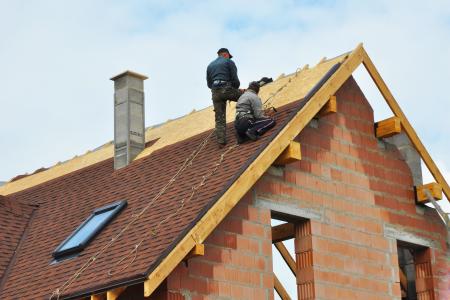Whether you’re repairing a leaky roof or installing a brand new one, finding the right roofing contractor and understanding the home roofing installation process are critical steps. A roof protects your home from the elements, contributes to its overall energy efficiency, and significantly impacts its appearance. This guide will help you navigate the process of choosing a trustworthy roofing contractor and preparing for a home roofing install.
Choosing the Right Roofing Contractor
Selecting a reliable roofing contractor is crucial. The right contractor will ensure that your roofing project is completed efficiently, effectively, and safely. Here are some key factors to consider when choosing a roofing contractor:
- Experience and Reputation: Look for a contractor with a strong track record and positive customer reviews. Experienced contractors understand the intricacies of roofing and can handle unexpected challenges that may arise during the installation or repair process.
- Licenses and Insurance: Ensure that your contractor is licensed and insured. This protects you against liability and ensures that the contractor meets industry standards.
- Detailed Quotes: A reputable contractor will provide a detailed quote that outlines the scope of work, the materials to be used, and the total cost. This transparency helps you avoid unexpected expenses and ensures that you understand what you’re paying for.
- Communication: Good communication is essential. Your contractor should be responsive to your questions and clear about the timeline and process. They should keep you informed throughout the project.
Preparing for Your Home Roofing Install
Once you’ve chosen a contractor, preparing for the installation of your new roof is the next step. Here’s how to ensure the process goes smoothly:
- Understanding Your Options: Discuss the different roofing materials with your contractor. Each material has its benefits and limitations depending on your climate, budget, and the style of your home. Common materials include asphalt shingles, metal roofing, and tiles.
- Planning for the Unexpected: Weather can impact the timing and duration of your roofing project. Be flexible and plan for potential delays. Make sure your contractor discusses how they handle unexpected issues, like discovering structural damage once the old roof is removed.
- Securing Permits: Many local governments require permits for roofing projects. A professional roofing contractor will often handle the permit process, but it’s important to confirm this upfront to avoid any legal issues.
- Preparing Your Property: Before the roofing work begins, take steps to protect your property. Move vehicles away from the work area, cover landscaping to protect it from debris, and secure any loose items around your home that might be affected by the construction.
- Safety Measures: Ensure that your contractor has a plan for safety to protect their workers and your property. This includes the use of safety harnesses, proper disposal of old roofing material, and the cleanup of nails and other debris.
Conclusion
Installing a new roof or replacing an old one is a significant investment in your home. Choosing the right roofing contractor and understanding the installation process are key to ensuring that your new roof is durable, functional, and aesthetically pleasing. With the right preparation and a reliable contractor, your new roof will enhance your home’s protection and curb appeal for many years to come.

